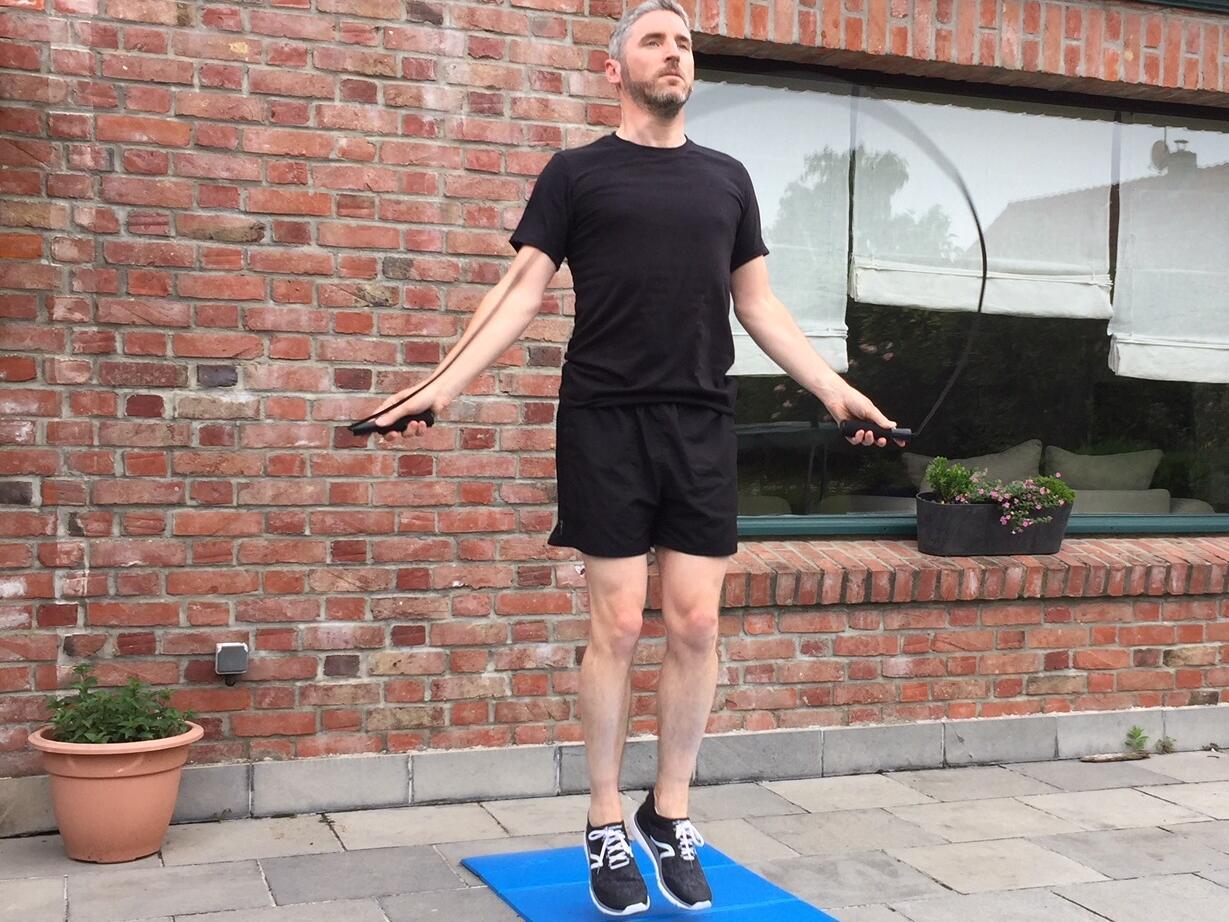Before you start
To use it properly, you need a certain amount of space for the rope to turn, particularly above your head. The rope should also be adjusted to your height. To check, put a foot on the rope. The handles should reach up to your armpits. If the rope is too long, you can adjust it and cut the extra rope if your rope allows it, or simply make a knot at each end.
Rhythm, coordination, and posture are key
To effectively use your rope, the first step is to find your rhythm and coordinate the rope to your jumps. If you're just beginning, start by jumping without the rope, to adjust the height of your jumps and find a pace you feel comfortable with. It is also a chance to perfect your posture: alignment of the head, neck, and spine, belly slightly tucked in, knees bent, jumping on the balls of your feet.
You can then take the rope and turn it next to you in one hand, to coordinate your feet with the rope. Once you've found your rhythm, you can put the 2 together.
The position of your arms and shoulders is also very important
When holding the rope in both hands, you also need to position your arms and shoulders correctly. For your shoulders, it's quite simple - they shouldn't move. Your wrists and to a small extent your forearms are what turn the rope and provide a rhythm for your jumps. Your elbows are bent and close to the body. Your wrists are far from your body, at hip height and slightly in front of your pelvis.
Go at your own pace
The length of your sets of jumps depends on your physical condition. Once again, go gradually, at your own pace, and without forcing anything. It is a cardio exercise, so regular breathing is very important. Always take time to recover between each set of jumps and don't forget to drink.
Different jumping techniques
The key to remember is jumping once per swing of the rope (except for the double jump technique).
Start with a Basic jump. This is the essential technique to learn if you're starting out. You jump with both feet at once, to find your rhythm and master your coordination with the rope. Since it's also the easiest technique, it will allow you to concentrate on your breathing and better manage your workout, based on your fitness level. If you only use this technique at the beginning, that's perfectly fine and very effective. Mastering the basics is essential before trying more complicated exercises.
When you feel more comfortable and if your fitness level allows it, you can vary your exercises and pace with more technical jumps. However, for all techniques, always start with the basic jump to get in the rhythm, and then you can change your jump. Here are the most well-known jumps:
Boxing jump: Here, you hop (not too high) from one foot to the other. You can jump several times on the same foot before changing feet.
Running jump: You change feet with each swing, as if you were running.
Lateral jump: Jump with both feet at once, starting with the basic jump, then to the right, then to the left, and so on with each swing.
~Double jump: The idea is to do 2 swings for each jump. To do that, you'll need to jump a bit higher.




